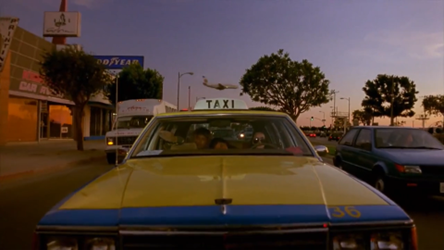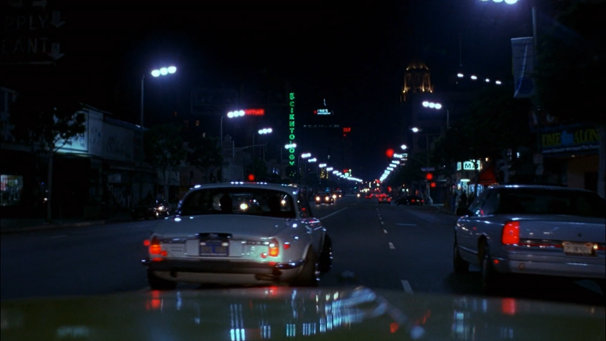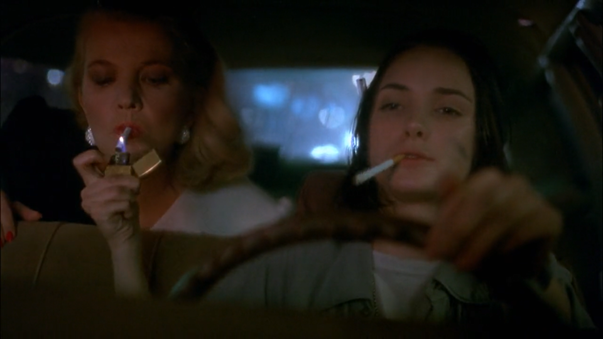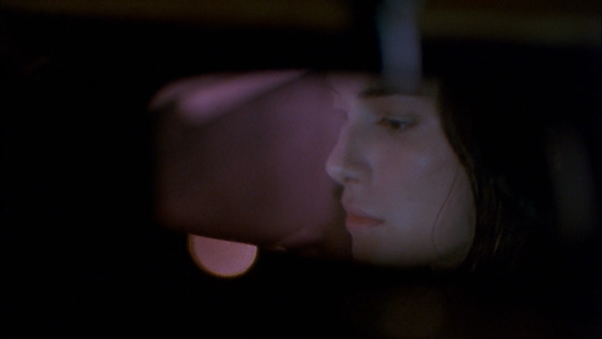“You’re really happy driving this taxi? Is that your whole goal in life?”
So asks Victoria, a Beverley Hills casting agent who has just offered her cab driver an acting role. Filmed with velveteen richness as dusk bleeds into night, the opening chapter of Jim Jarmusch’s five-vignette Night on Earth (1991) audaciously questions the American Dream and the constituents of success. “Are you saying you don’t want to be a movie star?” Victoria asks in disbelief as Corky, the driver, declines. “I want to be a mechanic,” she retorts, before driving away from Beverley Hills to her next pick-up.
Corky’s departure from this Hollywood neighborhood does not just signify her decline of the offer – it mirrors Jarmusch’s own directorial career. As an independent film maker, Jarmusch’s films do not conform to mainstream Hollywood conventions. His unhurried filming style, characterized by infrequent cuts and static camera movement, is the antithesis of the cut-heavy kinetic cinematography of mainstream narratives. In addition, his films have a penchant for exploring the lives of unusual or marginalized characters, rather than aligning with the typical hero-villain format. Night on Earth is unique in that it is a narrative exclusively of taxi journeys – something that would often be excluded from mainstream films.
But it is Jarmusch’s foreign interests that make his work particularly idiosyncratic. His films are known for incorporating foreign elements into his films, such as through using a multinational cast, international settings, or cultural references that are not limited to American culture. In doing so, his work has stylistically moved “eastwards,” away from Hollywood, to synthesize a culturally rich, cosmopolitan cinematic spectacle.
The opening airport shot symbolizes both Corky’s rejection of the American Dream and Jarmusch’s departure from Hollywood conventions. As Corky drives on the freeway, a plane flies in the background, emerging from behind a wall of financial advertisements. Having just taken off in the distance from behind the billboards, the plane’s take-off symbolizes a thematic departure from American capitalist culture. The plane’s movement in this scene seems to foreshadow Corky’s later decision to reject the capitalist ideal of a higher paid career. Furthermore, the plane’s physical departure from Los Angeles symbolizes Jarmusch’s own stylistic movement away from Hollywood’s norms. Furthermore, the plane’s rightward movement across the screen evokes an eastward, left-to-right movement across a map. This easterly travel correlates with Jarmusch’s interests in foreign cinema, as well as the geographical direction of the narrative – with subsequent chapters in New York, Paris, Rome and Helsinki. Though a seemingly unimportant background feature, the plane embodies these important motifs of political and stylistic departure from America and Hollywood.
Victoria’s Beverley Hills destination is also significant in this notion of departure. The neighborhood is the epicenter of stardom and wealth, signifying the pinnacle of the American Dream. For Corky, it is only a temporary stop, as she declines the offer and postulates a different version of that dream – one of blue-collar work. Corky’s nonchalance to a job offer that is highly sought after and idolized in Western culture challenges conventional thought about success and the importance of money. Using the medium of film to convey an almost disparaging view on a role within the film industry is a striking decision from Jarmusch, given his role as a director, and perhaps a daring critique of the industry itself of which he is a reluctant part, and from which his career has sought to break away.
Corky’s rejection of the job also coincides with the film’s slow style. Brian Jarvis points out the symbiotic relationship between capitalism and speed, with values such as “promptness and rapid turnover” (392). He reads Jarmusch’s unhurried pace not merely as an aesthetic decision, but an “oppositional rhythm” and “anti-aesthetic” (Jarvis 405) to “the capitalist imperative of speed” (Jarvis 392). Building on this, I assert that this “oppositional rhythm” to capitalism is also present in Corky’s rejection of the job offer for a lesser paid one.
Various critics have likened Jarmusch’s palette to that of Edward Hopper’s paintings (Jarvis 388). Night on Earth uses mostly dark hues, however vivid dashes of yellow and red cityscape lights are ever present, often reflected on the car bonnet. During the drive through Los Angeles, we see many extended shots of seemingly bland, desolate spaces of urban modernity. Many of Jarmusch’s films take an interest in what Andrew Klevan terms “the undramatic everyday” (28), which can be thought of as seemingly unimportant events and details of everyday life. Klevan draws upon philosopher Stanley Cavell’s assertion that history should be “interested… in the uneventful, seeking […] what is not out of the ordinary” (Cavell 193). Drawing on this, Jarmusch’s cinematic approach takes an interest in these seemingly uneventful details. For instance, we see shots of empty petrol stations, dimly lit quiet roads, or vacant car parks. These bland areas are examples of “the undramatic everyday,” which, at a first glance, seem to offer no contribution to the plot.
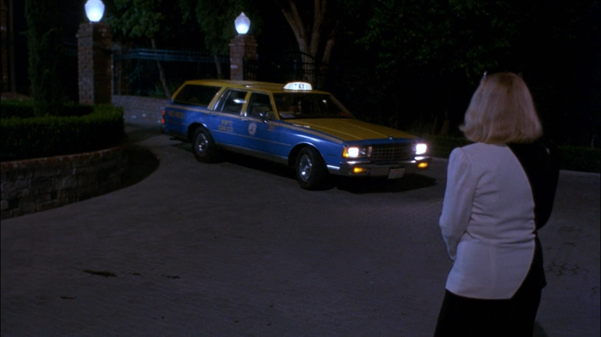
These “undramatic” settings call to mind French anthropologist Marc Augé’s notion of “non-places” – transnational spaces of modernity and globalization, often characterized by cultural anonymity and transience. These bland and mundane locations, often omitted from mainstream cinema, appeal to Jarmusch. Klevan questions whether it is possible to discover “what is fascinating in the ordinary without romanticising it, without transforming it into […] something dramatic” (29). Drawing on Klevan’s discussion, I would argue that through Jarmusch’s presentation of these undramatic spaces, it is possible to find fascination in the ordinary. In Night on Earth, Corky’s preference to work in these unglamorous spaces instead of Hollywood makes her rejection of the job more powerful; it shows that there is something of value in the ordinary.
Despite the title’s astronomical connotations, Night on Earth revels in the small details. In an interview with Peter Keogh, Jarmusch was told: “It seems that each of your films move further out of town. First to more distant American cities, and now international” (125). If “town” refers to Hollywood’s mainstream, then Night on Earth best exemplifies this departure.
References
Cavell, Stanley. “The Ordinary as the Uneventful (A Note on the Annales Historians).” Themes Out of School: Effects and Causes, North Point Press, 1984), pp. 184-195.
Jarvis, Brian. “‘You’ll Never Get It If You Don’t Slow Down, My Friend’: Towards a Rhythmanalysis of the Everyday in the Cinema of Jim Jarmusch and Gus Van Sant.” Journal of American Studies, vol. 54, no. 2, 2020, pp. 385-406.
Keogh, Peter. “Home and Away.” American Independent Cinema: A Sight and Sound Reader, edited by Jim Hillier, Palgrave, 2001, pp. 125-130.
Klevan, Andrew. Disclosure of the Everyday: Undramatic Achievement in Narrative Film, Flicks, 2000.
Author Biography
Callum McGrath is a twenty-one-year-old English student at Loughborough University, UK, with a keen interest in film. His particular interests include boxing films and slow cinema. He is keen explore how the film aesthetics of slow cinema can enrich our understanding of the political and philosophical relevance of the style.

